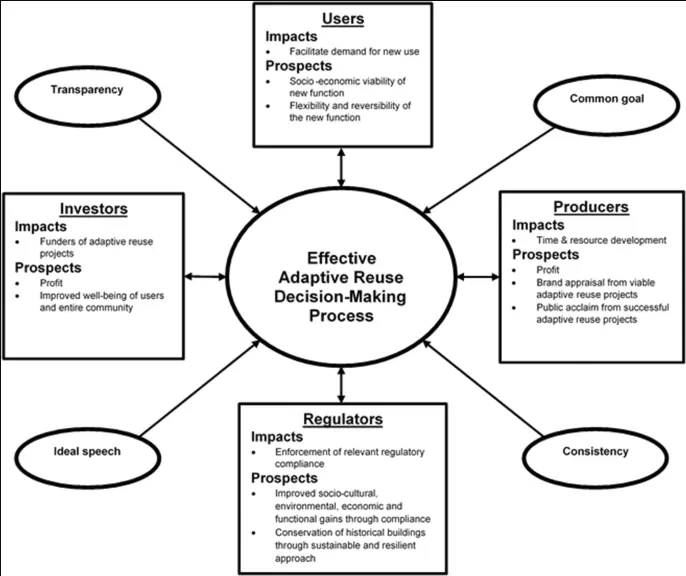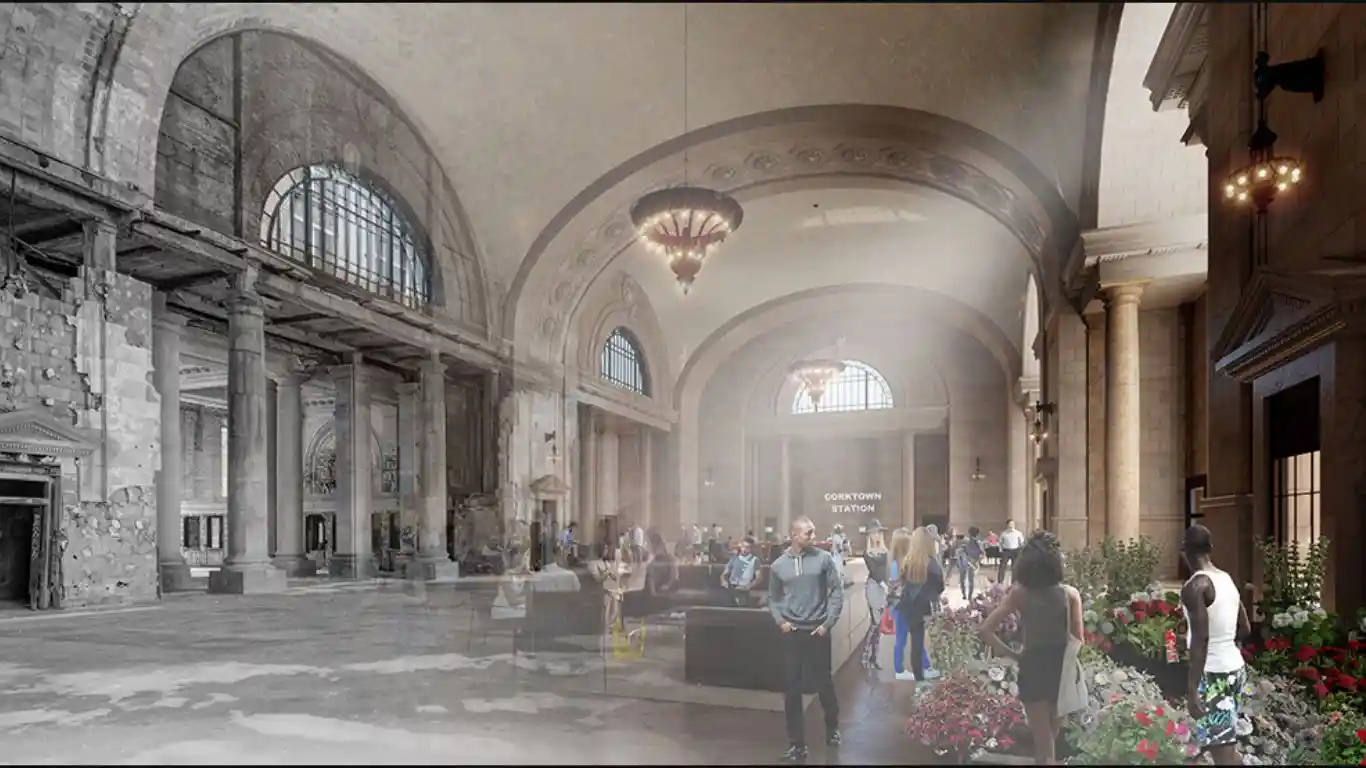Definition and Concept
Adaptive reuse is a sustainable and modern method to repurposing present houses or systems for today’s makes use of, in preference to demolishing them and beginning from scratch. It includes the transformation of underutilized or vacant areas into sensible, often truly one-of-a-kind, entities even as keeping large architectural and ancient factors. This concept breathes new lifestyles into antique structures, contributing to the conservation of assets and the discount of environmental effect.
Historical Background
The idea of adaptive reuse has deep ancient roots, courting all over again to historical civilizations. Throughout facts, civilizations have repurposed structures to satisfy evolving desires. One brilliant instance is the Roman Colosseum, which have become converted right into a quarry for building materials for the duration of the Middle Ages. This adaptive approach persevered through numerous architectural actions, which incorporates the Renaissance and Gothic Revival, in which antique houses had been tailor-made to new uses.
Significance and Benefits
The significance of adaptive reuse lies in its multifaceted benefits. It not awesome allows hold cultural and architectural historical beyond but furthermore offers financial, environmental, and social blessings. it reduces production waste, lowers energy intake, and revitalizes companies by way of manner of way of reinvigorating previously ignored areas. It additionally fosters a experience of vicinity and history, developing particular and colorful areas that resonate with network identity.

Factors Influencing Adaptive Reuse
Economic Considerations
Economic elements play a pivotal feature in the choice to adopt adaptive reuse obligations. Reusing gift systems can frequently be more rate-powerful than new manufacturing, mainly even as thinking about the immoderate charges of demolition and disposal of building materials. Additionally, it can reason prolonged belongings values and profits generation for assets owners.
Environmental Sustainability
Adaptive reuse is a key hassle of sustainable development. It appreciably reduces the environmental impact related to new manufacturing, together with the intake of uncooked materials and strength. By retaining cutting-edge homes, it promotes sustainability and minimizes carbon emissions, making it a critical approach within the combat in competition to climate exchange.
Regulatory and Legal Aspects
The fulfillment of adaptive reuse obligations is recommended thru regulatory and criminal elements. Zoning criminal recommendations, building codes, and maintenance ordinances can each facilitate or keep away from such responsibilities. Navigating those guidelines frequently calls for collaboration among assets owners, architects, and nearby authorities to make sure compliance at the same time as reaching the challenge’s desires.
Architectural and Design Challenges
It tasks gift precise architectural and format disturbing situations. Architects need to stability the safety of historic elements with the combination of current functionalities and aesthetics. This calls for cutting-edge solutions to conform gift systems to satisfy the desires of contemporary-day customers on the equal time as respecting the constructing’s man or woman and ancient beyond.
Case Studies
Transforming Industrial Buildings into Residential Spaces
One of the most not unusual adaptive re-use situations involves changing vintage corporation houses, which embody factories or warehouses, into residential areas. These duties often keep enterprise abilities like uncovered brickwork and large domestic domestic home windows at the same time as remodeling the interiors into fashionable, practical dwelling spaces.
Converting Historic Landmarks into Modern Functional Structures
Preserving historical landmarks thru adaptive re-use is critical for keeping cultural historical past. Projects like converting historical theaters into overall overall performance areas or antique educate stations into ingesting locations exemplify this technique. Such tasks have fun the beyond on the same time as serving present day-day desires.
Adaptive Reuse in Urban Planning and Development
Adaptive re-use is critical to metropolis making plans and improvement. Repurposing abandoned urban systems, like faculties or hospitals, into mixed-use tendencies fosters colorful, walkable neighborhoods. This technique reduces city sprawl and promotes sustainable, network-orientated residing.

Architectural and Design Principles
Preservation of Historical Elements
Preserving ancient factors is a vital principle of adaptive re-use. This includes defensive and showcasing architectural information, substances, and craftsmanship that make contributions to a building’s ancient importance. Careful healing guarantees that the building’s person endures.
Incorporating Sustainability Features
Sustainability is a important problem in modern-day format. Adaptive reuse responsibilities often combine strength-inexperienced structures, renewable substances, and inexperienced technology to reduce environmental effect and enhance lengthy-term sustainability.
Maximizing Space Efficiency
Efficient vicinity usage is essential in adaptive rreuse initiatives. Architects want to creatively redesign interiors to maximize functionality on the same time as respecting the prevailing layout and structural factors. This regularly involves open ground plans and bendy layout answers.
Challenges and Considerations
Structural Integrity and Safety
Ensuring the structural integrity and safety of tailored homes is paramount. Structural tests and improvements can be important to meet contemporary protection necessities whilst keeping the building’s ancient capabilities.
Zoning and Building Codes
Navigating complicated zoning rules and building codes can be a giant assignment in adaptive reuse tasks. Collaboration with community authorities and compliance professionals is essential to triumph over those barriers.
Community Engagement and Stakeholder Involvement
Engaging the community and associated with stakeholders early in the planning technique is vital for the success of adaptive reuse duties. Community enter can also have an impact on venture course, foster assist, and decorate the venture’s cultural relevance.

Success Stories
Iconic Reuse Projects Around the World
Highlighting iconic examples, which incorporates New York City’s High Line Park or London’s Tate Modern, showcases the worldwide impact of this technique. These fulfillment stories reveal how adaptive reuse can remodel towns and contribute to cultural enrichment.
Economic and Cultural Impact
Examining the financial and cultural impact of adaptive reuse responsibilities famous the tangible benefits they bring about to organizations. Increased property values, tourism, and cultural vibrancy are some of the pleasant effects.
Future Trends
Technological Advancements
Advancements in generation, at the aspect of Building Information Modeling (BIM) and three-D printing, are poised to revolutionize adaptive reuse obligations. These equipment can beautify layout precision and streamline manufacturing techniques.
Emerging Design Trends
Adaptive re-use initiatives are inspired with the useful aid of evolving format inclinations. Future trends also can furthermore emphasize sustainable materials, flexible regions, and the mixture of clever technology to meet the converting goals of customers.
Sustainability Innovations
As sustainability profits importance, adaptive re-use will keep to comply. Innovations in renewable power, water conservation, and sustainable building materials will play a critical feature in shaping the destiny of adaptive re-use.
Conclusion
Recap of Adaptive Reuse Benefits
In cease, it offers a sustainable, economically possible, and culturally enriching approach to repurposing existing houses. It preserves our architectural records, reduces environmental impact, and revitalizes communities
The Role in Sustainable Development
The function of adaptive re-use in sustainable improvement can not be overstated. It aligns with international efforts to fight climate alternate and promotes accountable beneficial aid management, making it a cornerstone of sustainable metropolis development.
Encouraging Adaptive Re-use Initiatives
To inspire extra adaptive re-use obligations, stakeholders, which incorporates governments, organizations, and corporations, need to resource hints and incentives that promote this sustainable exercise. By doing so, we are able to ensure a greener, extra vibrant future even as keeping our past.
FAQs
How does adaptive reuse advantage the surroundings?
Adaptive reuse blessings the environment via way of decreasing the need for logo spanking new creation, which consumes huge belongings and generates production waste. By repurposing present day houses, it conserves materials and power, reduces carbon emissions, and mitigates city sprawl. Additionally, sustainable skills may be incorporated into adaptive reuse obligations to further restrict environmental effect.
What are some examples of successful adaptive reuse initiatives?
There are numerous a success adaptive reuse duties global. Two exquisite examples encompass the High Line Park in New York City, which transformed an antique railway into an town park, and the Tate Modern in London, which converted a former electricity station proper into a famend cutting-edge art work museum. These projects display off how adaptive reuse can breathe new life into gift systems.
What disturbing situations are related to adaptive reuse duties?
Adaptive reuse projects can face annoying situations consisting of navigating complex zoning and building codes, ensuring structural integrity and safety, and maintaining historical factors while accommodating modern functionality. Additionally, network engagement and stakeholder involvement are important however can sometimes present stressful conditions in terms of consensus and choice-making.
How can I assist or get worried in adaptive reuse duties?
You can assist adaptive reuse responsibilities thru advocating for tips that encourage and incentivize such initiatives in your network. Additionally, you could get worried with the resource of taking element in public meetings and discussions associated with adaptive reuse proposals, volunteering with protection organizations, or investing in or sponsoring adaptive reuse initiatives that align together together with your interests and values.
Our other social links
other blogs and works
Tags: 7d plan, Adaptive reuse, architect in sonipat


